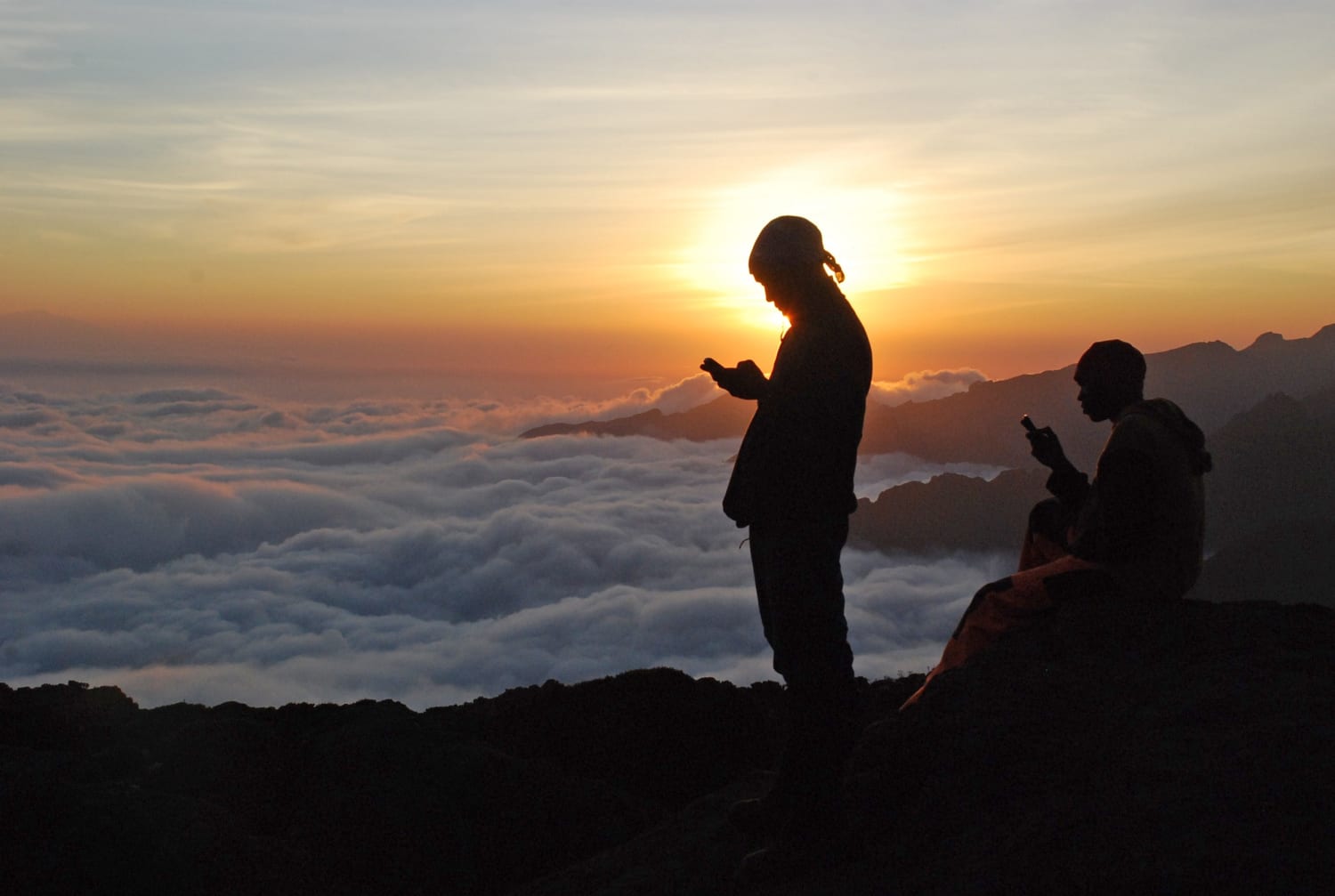Adventurers ascending Mount Kilimanjaro can now document their climbs in real time on Instagram, Twitter or even TikTok, following the installation of a new high-speed fiber-optic broadband internet network on the mountain’s slopes.
Standing 19,300 feet above sea level in northern Tanzania, Mount Kilimanjaro is Africa’s highest peak and is attempted by more than 30,000 tourists per year, according to local tourist services.
The new broadband network, set up by state-owned Tanzania Telecommunications Corp., will enable climbers to access reliable Wi-Fi internet up to an altitude of 12,205 feet (3,720 meters).
Tanzania hopes to offer full internet connectivity up to the summit of the mountain by the end of this year.
“All visitors will get connected … [up to] this point of the mountain,” Tanzania’s minister of information and communication, Nape Moses Nnauye, told reporters at a news conference Tuesday at Horombo Huts, an accommodation camp en route to the peak that is 12,205 feet above sea level.
The internet service is being provided by fiber-optic cables, which use plastic or glass cables to transmit data at the speed of light.
It is part of a wider internet connectivity program by the Tanzanian government called the National ICT Broadband Backbone, also supported by China.
Sam Barker, who heads analytics at U.K.-based digital technology research firm Juniper Research, said having broadband on the mountain is significantly better than trying to set up a 4G mobile internet network.
“Traditionally, installing fiber-optic cable has been plagued by the presence of existing infrastructure and having to work around buildings or other network infrastructure,” he told NBC News by email Friday.
“This will not be an issue on Mount Kilimanjaro,” he said. More likely issues to connectivity will include environmental factors, such as exposure to extreme temperatures and harsh weather, he added.
However, Barker concluded that the benefits of installing fiber-optic broadband far outweighed the potential cost.
“Being able to provide connectivity with high-data rates and low latency [the time it takes to get a response after sending out a data request] will provide a significant improvement in terms of safety,” he added.
In comparison, Mount Everest in the Himalayas, bordering Nepal and China, had 4G mobile connectivity since 2013, which was then upgraded to a fiber-optic broadband network in 2017.
And in 2020, Chinese telecom-maker Huawei installed its own fiber-optics cables on Mount Everest to make a 5G internet network possible.
Rural coverage controversy
While Nnauye claimed the move would offer a boost to safer tourism by allowing climbers to more easily access emergency services, many on social media have accused the government of prioritizing the interests of tourists over local residents.

Telecommunications coverage in Tanzania is almost entirely managed by international private corporations to which the government sells coverage licenses, according to Josef Noll, a researcher in wireless network systems at Norway’s University of Oslo, who spoke to NBC News by phone Friday.
Operators refuse to expand 3G and 4G access to rural areas at the base of Kilimanjaro because not enough people have the handsets to facilitate internet use, says Noll, yet according to him, local residents don’t invest in these handsets because there is no internet coverage.
“It’s a chicken and egg situation,” he concluded.
“The government doesn’t have the necessary skills to force the mobile operators to change their business models.”
The tourism industry is vital to Tanzania’s economy, accounting for 17% of the nation’s gross domestic product in 2019, and plays an outsize role in growth, employment and poverty reduction, according to a World Bank report.
The Tanzanian government also hopes to bolster tourism to Kilimanjaro through the construction of cable cars for people who want the views without the hike.
The tourism board was seeking investments from both China and the West, Reuters reported in 2019, before the plans stalled due to the coronavirus pandemic.
The scheme drew widespread criticism from local porters and environmental groups who claimed the construction would damage Kilimanjaro’s delicate ecosystem and take cash out of the hands of local tour groups.
Source: | This article originally belongs to Nbcnews.com










